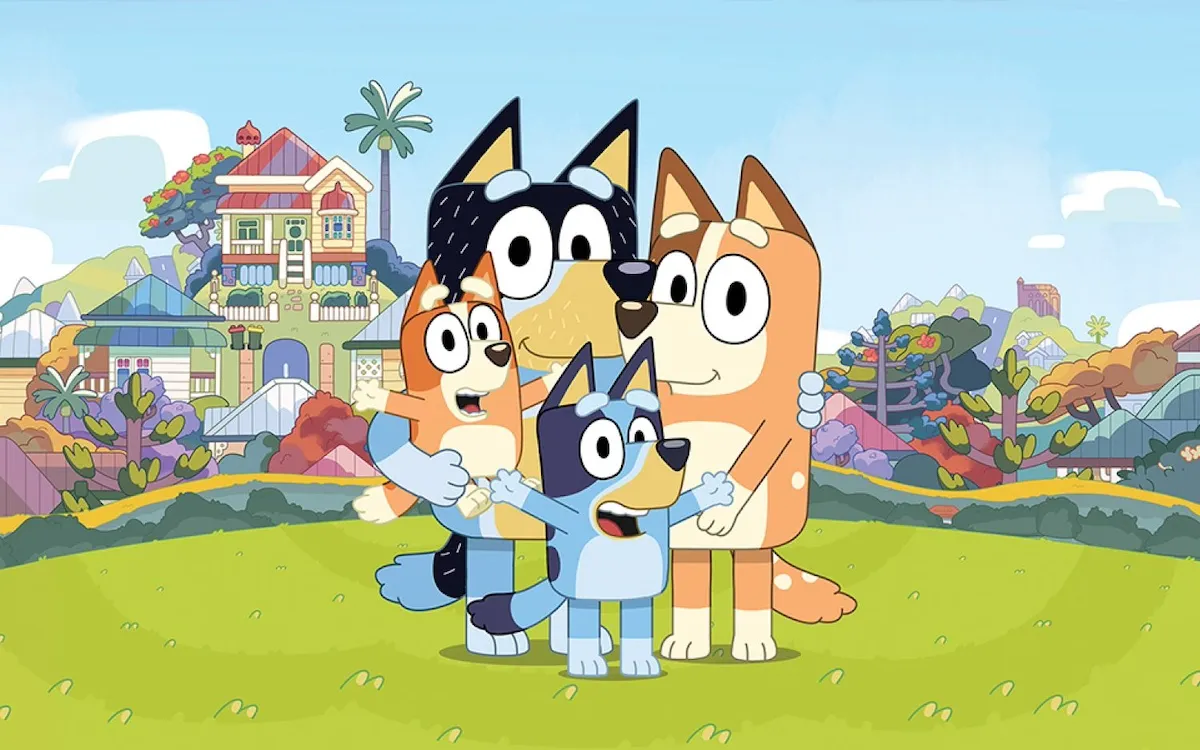Why Is ‘Bluey’ So Popular? There’s No One Reason, But Here’s What Makes It Magical

Bluey has taken the world by storm, but why is a children’s show so popular with viewers of all ages? If you’re struggling to wrap your head around the Bluey phenomenon, then here are the basics.
Bluey started off as a show aimed at preschoolers, created by Queensland native Joe Brumm. In its early days back in 2018, Bluey was a pretty straightforward kid’s show. The first episode, “Magic Xylophone,” sees Bluey and her little sister Bingo playing pretend with a toy xylophone. They take turns freezing their dad, Bandit, while their mother Chilli looks on.
Bluey is popular among kids because it hits all the right notes: the characters are friendly-looking cartoon dogs living a suburban life that’s familiar to many young viewers. The character design is simple, expressive, and eye-catching, and the animation is high quality. Bluey herself is a relatable character for kids, brimming with curiosity and imagination as she ropes everyone around her into various games.
At some point, though, Bluey began to transcend its own genre. The acting is superb, with Melanie Zanetti playing the gentle but quirky Chilli and David McCormack playing the irrepressibly silly Bandit. Although Bluey and Bingo’s child voice actors are uncredited to protect their privacy, they’ve clearly got a gift for acting, infusing Bluey and Bingo with warmth and heart.
The writing is also fantastic, and as Bluey started to go global, parents and other adults realized it. The show began to deal with weightier topics, exploring issues like infertility, trauma, and insecurities around parenting. For example, in “Baby Race,” Chilli tells Bluey and Bingo about how she stressed over Bluey’s milestones as an infant. Many parents found that they could empathize with Chilli, and the episode validated their own struggles to feel like they were good enough.
Other episodes have taken an experimental approach to storytelling. “Rain” tells a story with no dialogue, while “Sleepy Time” turns motherly love into a space odyssey. Other episodes, like “Cricket,” “Camping,” and “Surprise,” feature flash forwards that feature the characters as older children or even adults. Audiences of all ages have enjoyed the show’s challenging yet accessible approach to story.
Combine all those factors—great writing, great acting, and great animation—and you get a series that speaks to viewers everywhere. Is there one single factor that makes Bluey great? Nope. It’s just really, really well made.
Want to get on the Bluey train? Check out our list of the best Bluey episodes for adults, along with our list of the best Bluey episodes of all time.
(featured image: Disney+)
Have a tip we should know? [email protected]
